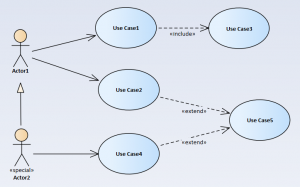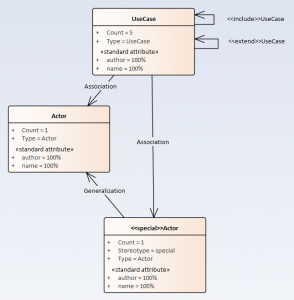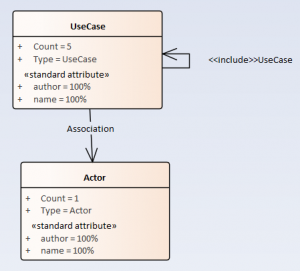Home / What is a Reference model? / Creating Reference Models / What is a Reference model?
Import an MDG to create a Reference Model
Importing and exporting Reference Models
Editing RM Connector type properties
Stereotypes inheriting from other Element Types
Customizing Reference Model Properties
Customizing Reference Model Element Properties
What is a Reference model?
Best Practice Modelling
Model Expert lets you create Reference models which contain your ‘Best Practice’ modelling. (Note: we should call these Reference META-models, but we will shorten this to Reference Model)
- Reference models can include required and permitted element types and stereotypes, connector types and stereotypes, and validation rules.
- An EA package may be associated with a single Reference Model, so that modellers must follow the rules of that Reference Model as they create elements and diagrams
Such a package is described as ‘Managed’ - Diagrams and packages which are not Managed may be checked against a Reference Model, just by selecting the Reference Model you’d like to use.
What can a Reference model contain?
| Item | Description | See Also |
|---|---|---|
| Reference Model | Holds the rules for a single type of model. For example, process modelling, requirements modelling | Editing Reference Model Properties |
| Element types | Describes the types and stereotypes of element which are allowed within a package.
You may also define which EA fields (such as name, notes, status, phase etc) which the modeler may use, which ones are mandatory or optional, and which have a defined set of values. These settings can be used to show modellers a custom properties page. |
Customizing EA Reference Model Element Properties |
| Diagram types | Describes the types of diagram which modellers may create. For each diagram, you may specify which kinds of elements can appear and which are mandatory. | Reference model diagram properties |
| Connectors | Reference Models also describe the number and types of connectors which are allowed between each type of element | |
| Customizable standard rules | These rules apply all of the ideas above, but let you add your own text and severity | Built-in validation rules |
| Scripted rules | If the built in rules don’t do what you need, you can add almost any other rule you can imagine with scripted rules | Writing scripted rules |
Reference Model Element Type
The main content of a Reference Model is a set of classes. Each class represents one element type/stereotype.
It will always have attributes of:
- EA Type
- EA Stereotype
It may also have additional class attributes, which describe the EA properties and tagged values which examples of that type can use. This will almost always contain ‘name’: EA elements usually have a name. These class attributes are split into two:
- <<standard attribute>> – these are the standard EA properties which the type uses
- <tagged value>> – shows where the type uses tagged value.
Reference Model Example
A Model like this:

has this meta-model:

This just says that the model contains Actors, <<special>>Actors and Use Cases, and which kinds of relationships are present.
Model Expert analyses your model to create a meta-model. Then you can make whatever changes you need before saving it as your Reference model.
For example, you might not want your model to have <<special>>Actors, or not use the ‘extends’ link between Use Cases (good idea!), in which case you can just edit your meta-model to look like this:

When Model Expert saves a meta-model created like this as a Reference Model, it just removes a few of the attributes of the meta-model (like ‘count’). It can then be applied as the modelling standard for any part of your model.
Saving and Sharing Meta- and Reference Models
Perhaps the slightly confusing bit of the reference meta-model idea is that they are themselves EA models: a simple class diagram. Each class in the diagram represents an EA ‘thing’ (‘Requirement’, <<special>>UseCase, Port etc), and the connectors in the diagram represent the types of relationships which your model can have.
BUT – this does mean they can live inside your EA models, just like any other diagrams, and be exported, imported, documented and viewed using strandard EA tools and techniques.
Meta-model Connectors
Note that Model Expert reference meta-model diagrams only have two kinds of connectors themselves:
- Associations. The names of these say what kind of EA connector are allowed in your model
- Aggregations. These show where there are parent/child relationships in your model.
See Also